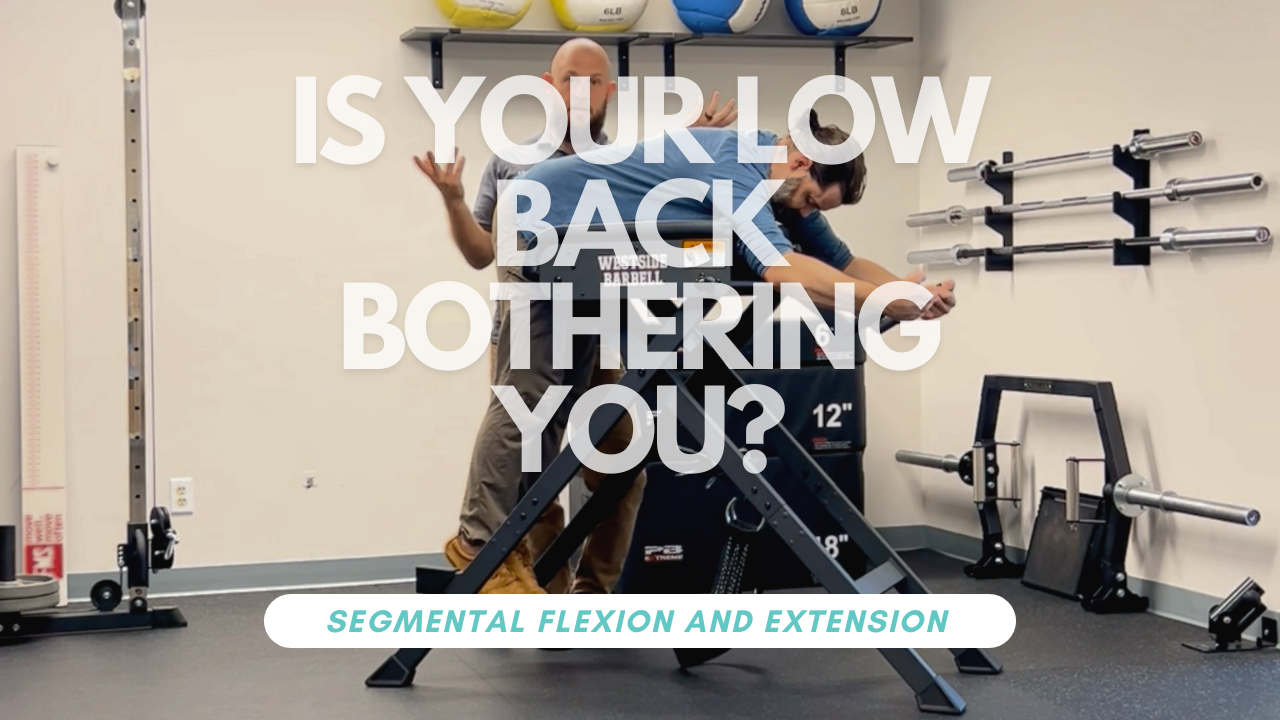
Low back pain is a common issue that many people face, often exacerbated by movements like bending. One of the key components in addressing this issue is understanding lumbar flexion and its role in maintaining a healthy back.
At Twin Cities Movement, we frequently encounter patients who lack adequate lumbar flexion, which can lead to significant discomfort and an increased risk of injury. This blog post will delve into the importance of lumbar flexion, the challenges associated with it, and the methods we use to help patients regain this essential movement.
The Importance of Lumbar Flexion
Lumbar flexion refers to the forward bending movement of the lower back, which is crucial for various daily activities, including bending to pick up objects, tying shoes, and even simple actions like sitting and standing. A lack of lumbar flexion can lead to stiffness, pain, and an increased likelihood of injury. It’s particularly important to address this issue in patients who have experienced low back pain, as limited flexion can hinder recovery and lead to recurring issues.
In the early stages of treating low back pain, the focus is often on extension exercises to alleviate pain and stabilize the spine. However, once the acute pain subsides, it’s crucial to reintroduce and strengthen lumbar flexion to ensure a balanced and functional range of motion. This helps distribute the load evenly across the spine, reducing the risk of localized stress and injury.
Assessing Lumbar Flexion
The assessment of lumbar flexion begins with a careful observation of the patient’s movement. A common starting point is the modified child’s pose, where the patient sits back on their heels with their forehead resting between their knees and arms extended backward. This position helps evaluate the curvature and smoothness of the lumbar spine.
In this position, we look for hinge points or areas where the spine does not bend smoothly. Ideally, the spine should curve evenly, with each of the five lumbar segments contributing to the movement. If there are flat spots or excessive hinging at certain points, it indicates areas of stiffness or hypermobility that need to be addressed. For example, in a demonstration with a patient named Andy, we observed slight hinge points that required attention to ensure a more uniform distribution of movement.
Regaining Lumbar Flexion: The Role of PAILs and RAILs
Once we’ve identified areas needing improvement, we use a technique called PAILs and RAILs (Progressive Angular Isometric Loading and Regressive Angular Isometric Loading) to enhance lumbar flexion. This method involves using tools like Franklin Balls to concentrate force on specific areas of the spine, encouraging mobility and flexibility.
For example, placing Franklin Balls just above the belt line and having the patient lean over a tabletop can help target the lower lumbar spine. The patient then relaxes into this position, allowing the balls to help open up the stiff areas. This is followed by a PAILs contraction, where the patient contracts the muscles around the target area without moving the spine. This is held for four to eight seconds, followed by a relaxation phase where the patient tries to increase the flexion around the balls.
This process is repeated, gradually increasing the range of motion and ensuring that each segment of the lumbar spine contributes to the movement. It’s important to note that this exercise requires careful monitoring and guidance, as improper execution can lead to further strain or injury.
Practical Tips for Patients
Seek Professional Assessment: Before starting any exercise regimen, consult with a healthcare professional to assess your condition and receive personalized guidance.
Start Slowly: Gradual progression is key to avoiding further injury. Begin with basic movements and slowly increase the intensity and range of motion.
Listen to Your Body: Pay attention to any signs of discomfort or pain. If an exercise feels too intense, modify it or seek advice from a professional.
Consistency is Key: Regular practice is essential for improving flexibility and strength. Incorporate recommended exercises into your daily routine.
Focus on Overall Health: Maintaining a healthy weight, staying active, and practicing good posture can all contribute to better back health and reduce the risk of pain.
Check out our YouTube Channel for this video and more!
Low back pain with bending is a common issue that can significantly impact quality of life. By understanding the role of lumbar flexion and employing targeted exercises like PAILs and RAILs, patients can regain flexibility, reduce pain, and enhance their overall spinal health.
Trying different exercises you see online can be great, but sometimes it takes an expert guide to help you meet your goals.
We use the Movement Method to get to the root cause of your low back pain, and then we help you do the work and stay accountable so you can get back to the things you love to do.
